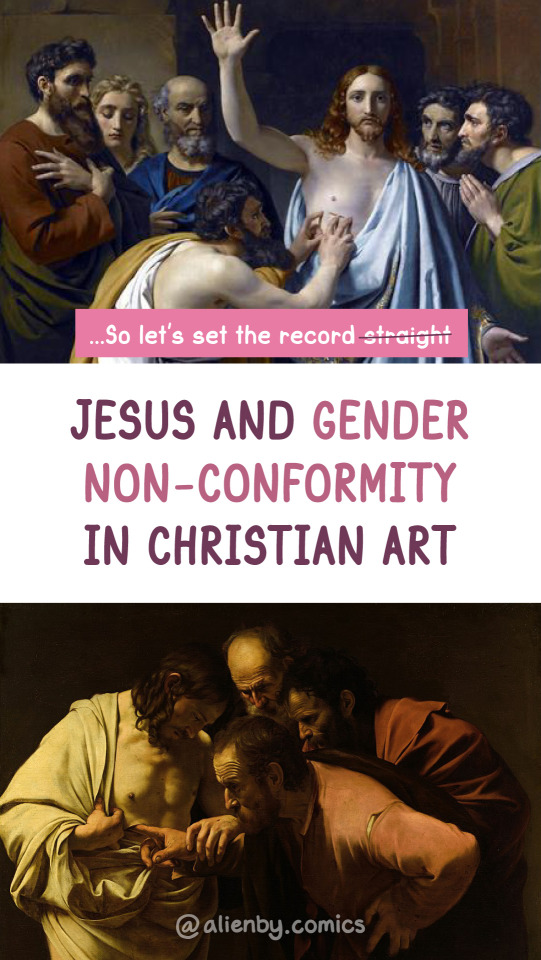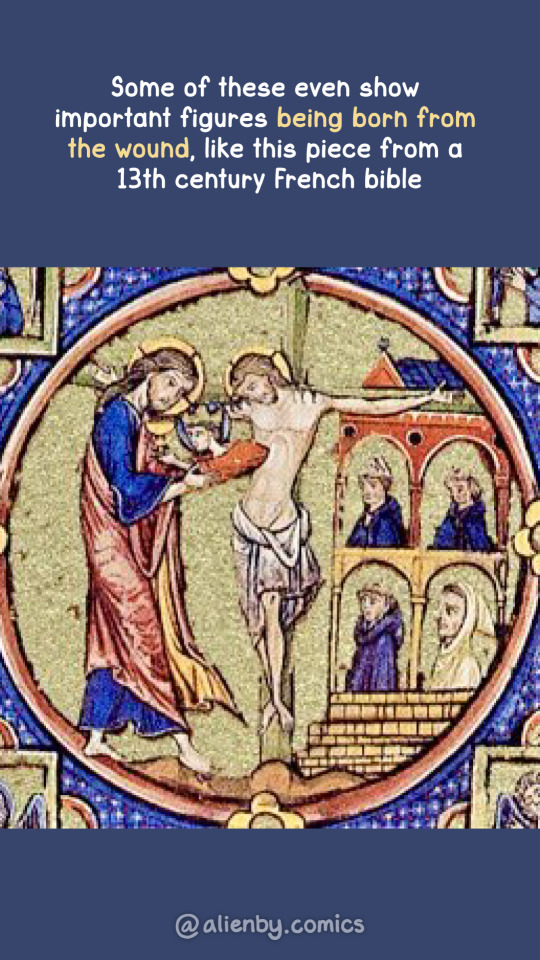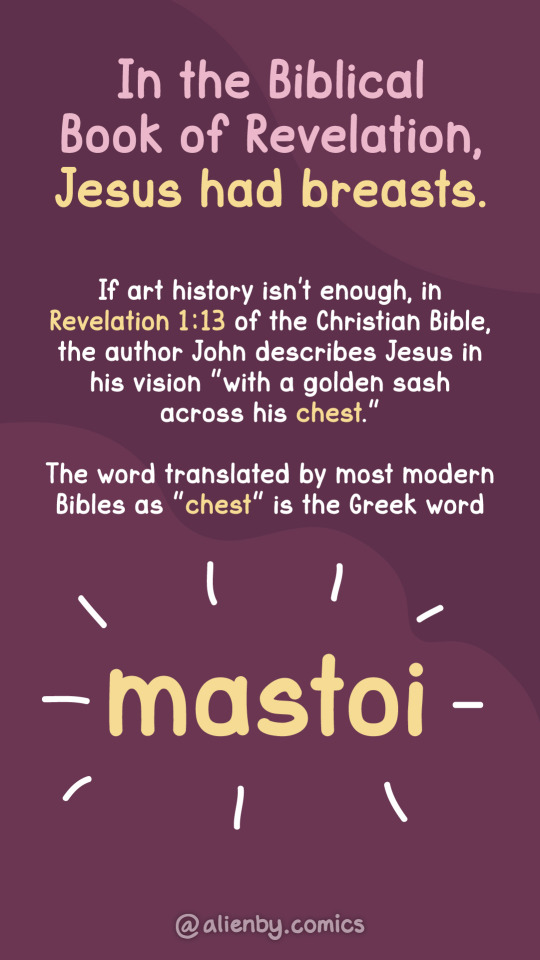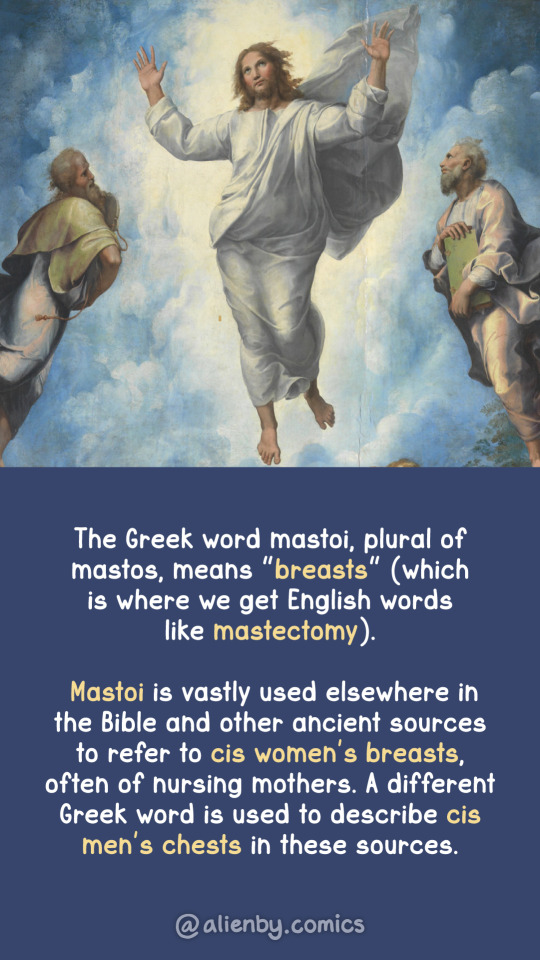#ngaju
Explore tagged Tumblr posts
Text
also, outside of Christianity, most ancient religions had some depictions or outright declarations of transgender and gender nonconforming divinity, such as: the damohean creator deity, yoruban spirits, the akan pantheon, the aztec deity tezcatlipoca/yāōtl, the vodou/voodoo iwa, the shang and predynastic zhou religions, the japanese oyamakui, the buddhist ānanda and many bodhisattvas, the sudulnon mythology, the islamic jinn, the australian aboriginal deities ungud and wunambal, the pre-Christian philippine malyari and bathala, the ngaju mahatala-jata, the iban shamans manang bali, the classical maya maize, tons of japanese kami, more hindu deities than I know, sumerian mythology, the akkadian atrahasis creation myth having a deity specifically request nonbinary people to be created, the mesopotamian nonbinary priests called gala and the blessing of ishtar upon all nonbinary people making them her beloved and holy after they were cursed by the queen of the dead named ereshkihal, the greek hermaphroditus, the multi-religon myths around lake salmacis, the norse gudmundr, the norse cult that worshipped "gender transgressions" as a form of power (as written about by brit solli), the banjasa, bantut, and bayogin, the hawaiian healing stones of kapaemahu, and whatever was going on with set in egyptian mythology.
(sorry if I spelled any of those wrong)
those are all I can remember off the top of my head but I know there are so so so many I don't know about or can't remember right now, if you know of others please add more !!
Gender Nonconforming Jesus: A look at art history. CW: religion, transphobia, artistic nudity, depictions of open wounds (Long post)














23K notes
·
View notes
Text
SUKU DAYAK

Suku Dayak adalah suku asli Pulau Kalimantan yang tersebar di lima provinsi, yaitu Kalimantan Barat, Kalimantan Tengah, Kalimantan Selatan, Kalimantan Timur, dan Kalimantan Utara. Suku Dayak memiliki beberapa ciri khas, di antaranya:
Asal usulSuku Dayak berasal dari imigran yang berasal dari Provinsi Yunnan di China Selatan, tepatnya di Sungai Yang Tse Kiang, Sungai Mekong, dan Sungai Menan.
Ciri khasSalah satu ciri khas Suku Dayak adalah Mandau, sejenis golok yang dibuat dari batu gunung.
TradisiSuku Dayak memiliki beberapa tradisi, seperti upacara adat Tiwah yang merupakan ritual pemakaman, dan tradisi menjaga hutan.
Semboyan hidupSemboyan hidup Suku Dayak adalah Isen Mulang yang artinya pantang menyerah.
TatoSuku Dayak Iban dikenal dengan tato sebagai seni ukir atau rajah pada tubuh mereka.
Tradisi NgayauTradisi Ngayau adalah kegiatan berburu kepala musuh yang dilakukan beberapa rumpun Dayak saja, yaitu Ngaju, Iban, serta Kenyah.
Suku Dayak memiliki kehebatan dan ilmu magis yang telah menginspirasi banyak karya seni dan budaya populer di Indonesia. PERMATABET88
0 notes
Text
Pakaian Adat Kalimantan Tengah (Dayak Ngaju)

Pakaian adat Dayak Ngaju di Kalimantan Tengah disebut Baju Sangkarut untuk pria, terbuat dari kulit kayu dengan hiasan manik-manik dan bulu burung. Sedangkan wanita mengenakan Baju Rabi Tingang, yang dihiasi dengan bulu burung enggang dan aksesori manik-manik. Pakaian ini sering dipakai dalam upacara adat, tarian, dan ritual keagamaan.
0 notes
Link
Lirik Lagu Aku Satia Manunggu - Fonny Shencia
0 notes
Photo

#ngaju #kp https://www.instagram.com/p/BzNDl16nQeE/?igshid=14bd88ra7bedo
0 notes
Text
I sometimes ramble about religion in Indonesia so here's just two out of many introductory papers to make sense of the times I make a post on it :D
Indonesia, modernity and some problems of religious adaptation is a paper which delves into modern, institutionalized Indonesian Hinduism (Agama Hindu Dharma) and the struggles of the Eastern religion to adapt to Indonesia's definition of religion which was heavily constricted by Muslim conservatives.
The Development of the Hindu Kaharingan Religion talks about a folk-turned-world religion among the Ngaju Dayaks of Central Kalimantan and how it had to be entirely remolded and eventually was recognized as a form of Indonesian Hinduism.
18 notes
·
View notes
Photo

Illustration of Dayak Ngaju Warrior by W.T. Gordon c. 1857
2 notes
·
View notes
Video
instagram
Uuuu Pahari... Jadi kuman kah ketun ??? Ihat kuh ih je misek, awi tawang kuh ketun belah kau are je J-O-M-B-L-O. Asi-asi jatun je misek ketun "jadi kuman kah ikau nah sayang" 😆 Credit to from @yulianabundan #olohitah #uluhitah #hureh #dayak #ngaju_isut #ngaju #ngajuisut #uluhlewu #kutakitah #bahasadayak #hakutakkalteng #kalimantantengah #IbuMawiney #hakutakdayak #infopky #infoplk #palangkaraya #kotapalangkaraya #kalimantantengah #visitpalangkaraya #visitkalimantantengah #ngaju_isut #madlipzdayak Follow : @mhspalangkaraya & @seputaranpky #seputaranplk #seputaranpky #mhspalangkaraya #hellokalteng #palangkaraya #kalimantan #kalteng (di Palangkaraya) https://www.instagram.com/p/B0pcFpqD-Wz/?igshid=15654g0cyxoqw
#olohitah#uluhitah#hureh#dayak#ngaju_isut#ngaju#ngajuisut#uluhlewu#kutakitah#bahasadayak#hakutakkalteng#kalimantantengah#ibumawiney#hakutakdayak#infopky#infoplk#palangkaraya#kotapalangkaraya#visitpalangkaraya#visitkalimantantengah#madlipzdayak#seputaranplk#seputaranpky#mhspalangkaraya#hellokalteng#kalimantan#kalteng
0 notes
Photo

Finally, 'Batang Garing' first official selection and laurel :") we got it from Cardiff International Film Festival 2017, South Wales, United Kingdom. Thanks God :"D #filmfestival #shortanimation #2danimation #batanggaring #dayak #ngaju #dayakngaju #indonesia #borneo #kalimantan #shortfilm #animation #2d
#2danimation#shortfilm#borneo#animation#filmfestival#shortanimation#dayak#batanggaring#ngaju#kalimantan#indonesia#2d#dayakngaju
1 note
·
View note
Photo

TJILIK RIWUT adalah orang asli Kalimantan yang berasal dari suku Dayak Ngaju. Dengan bangga ia menyebut dirinya sebagai orang hutan karena terbiasa hidup di alam liar Kalimantan. Bahkan semasa hidupnya, ia sudah 3 kali mengelilingi pulau Borneo tersebut hanya dengan jalan kaki serta menggunakan sampan. Tahun 1940, ia sudah menjadi Pemimpin Redaksi Majalah Suara Pakat. Di kurun waktu yang sama, ia juga bekerja sebagai koresponden Harian Pemandangan. INDONESIA akhirnya merdeka dan Tjilik Riwut dipercaya menjadi Perwakilan Dewan Pimpinan Penyelenggaraan Ekspedisi ke Borneo di Yogyakarta. Tahun berikutnya, ia mewakil 185 ribu rakyat Dayak di pedalaman Kalimantan yang terdiri dari 142 suku, 145 kepala kampung, 12 kepala adat, 4 kepala suku, 3 panglima, 10 patih, 2 tumenggung, dan 2 kepala burung untuk menyatakan sumpah setia kepada Republik Indonesia. Demi mempertahankan kemerdekaan, Tjilik Riwut kemudian terjun ke dunia militer dan menjadi Komandan Pasukan MN 101 Mobiele Brigade MBT/TNI Kalimantan. Ia jua mencatatkan prestasi di bidang militer karena kesuksesannya sebagai komando Penerjung Payung Pertama AURI pada 17 Oktober 1947. Sejak saat itu 17 Oktober diperingati sebagai hari Pasukan Khas TNI-AU. *** Bukan saja nasionalis, ia juga sangat menjunjung tinggi kebudayaan dan leluhurnya. Ia selalu menekankan pentingnya untuk tetap mengingat asal-usul kita sebagai manusia. Baginya, kebugayaan adalah sebuah identitas yang harus dipelihara. Idealosmenya ini tertuang dalam beberapa buku karyanya, yaitu Kalimantan Memanggil (1958), Kalimantan Membangun (1979), dan Manaser Panatau Tatu Hiang: Menyelami Kekayaan Leluhur (2003). Lewat tulisannya, ia banyak mengenalkan dan mengabadikan kebudayaan suku Dayak. #pahlawan #pahlawannasional #pahlawanbangsa #haripahlawan #haripahlawan10november #joyofheroesspirit #roadtobimmerfest #roadtobimmerfest2019 #bimmerfest #indonesianbimmerfest #indonesianbimmerfest2019 #ibf2019 #ibf2019surabaya #bmwccisurabayachapter #bmwccikedirichapter #bmwccikediri #teambledhugkelud #joyishere https://www.instagram.com/p/B47WE0VFkFQ/?utm_medium=tumblr
#pahlawan#pahlawannasional#pahlawanbangsa#haripahlawan#haripahlawan10november#joyofheroesspirit#roadtobimmerfest#roadtobimmerfest2019#bimmerfest#indonesianbimmerfest#indonesianbimmerfest2019#ibf2019#ibf2019surabaya#bmwccisurabayachapter#bmwccikedirichapter#bmwccikediri#teambledhugkelud#joyishere
0 notes
Text
NDJESË ZOTI OBAMA ...
NDJESË ZOTI OBAMA …
Nga Ylli Dylgjeri – Zoti Obama,pranoni Ju lutem ndjesen time si qytetar i nje vendi trafikant ne Europe. I një vendi të vjedhur, te perçudnuar e te klasifikuar ngaJu dhe Qeveria Juaj si vendi Narkotrafikut. Ndjese zoti Obama,ndjese se nje nga bashkebiseduesit e Tu qeveritar ne foton e Shtepise se Bardhe u denua sot si trafikant droge ne grup te organizuar.Ndjese zoti Obama,se nje qeveritar…

View On WordPress
0 notes
Link
Lirik Lagu Tapikat Bawi Balu - Jhon Christian
0 notes
Photo

Semua terjadi apa adanya Bukan suatu yang mengikuti rencana Semua terjadi dengan begitu saja Bahkan aku pun tak menduganya Semua yang ada di dalam kepala Melayang tinggi jauh ke angkasa Semua yang ada di sekitar kata 'jika nanti' Terbang mendekati bintang yang sendiri Aku tak apa Jalani saja yang di depan mata Kataku kepadaku saat aku bersama aku Bukan masalah yang betapa Pun juga tak perlu dipikir bagaimana Hanya hadapi saja Bukankah sesuatu menariknya berlipat Ketika ada banyak kemungkinan yang mengikat? . . . . . . . . Ya ngaju saja. Daripada nganu mendingan nganu 😊 (at FISIPOL UGM)
5 notes
·
View notes
Text
Adventist World Radio 2225 23 Dec 2020
11955Khz 2218 23 DEC 2020 - ADVENTIST WORLD RADIO (UNITED STATES OF AMERICA) from STATION KSDA, AGTA,. SINPO = 35122. (Ngaju) ?Asian Language?, male announcer reading. @2200z music (female vocals). @2224z female announcer reading. @2225z music (male vocals). Backyard fence antenna w/MFJ-1020C active antenna (used as a preamplifier/preselector), Etón e1XM. 100kW, beamAz 255°, bearing 302°. Received at Plymouth, United States, 11335KM from transmitter at Station KSDA, Agta,. Local time: 1618.
0 notes
Photo

NGAJU Flannel shirt saat ini menjadi produk unggulan kami, berbahan dasar full katun disemua produk yang kami sajikan. Namun handfeel serta texture bahan yang ararkula co. tawarkan memiliki varian masing" : 1. Cartenzs : Flannel katun ini memiliki texture lebih berserat, berbulu & lebih tebal dibanding varian flannel kami lainnya. 2. Sanggar : Flannel katun sanggar memiliki texture yang hampir sama dengan varian flannel cartenzs kami, hanya saja sanggar tak setebal flannel cartenzs. 3. Raung : Flannel katun ini memiliki texture berbeda dibanding dengan cartenzs & sanggar, raung memiliki texture lebih halus & memiliki ketebalan yang rendah — — — — Flannel shir Ngaju termasuk kategori Cartenz flannel — — — — — Maka kenali kebutuhan kalian lebih jauh Dimana kalian dapatkan produk kami : @ararkulaclothes Bagaimana kami membuwat : @arkl_production Bagaimana kami tumbuh : @arkl.society Customer Service : 0857 - 333 - 60275 Hallo Indonesia kami menunggu saran & kritik kalian. #ararkulaindonesia #indonesia #brand #shirt #local
1 note
·
View note
Text
My two childs
...that will turned into 3 and 2 years in this year. I hope someday I can continue their stories again... I had a dream to connected some myths of my country's cultures through fiction.
***
1. Inkarna (Incarnation)


Summary:
Long time ago, the world was formless until the Creator created Light and Darkness. Thus, came the existence of Barong and Rangda, the ruler of Life and Destructor. They were known as ‘Inkarna’.
Slowly realizing a terrifying power, Rangda accidentally killed a baby boar. She ran to the world of Death and decided to stay there. Meanwhile, Barong believed that they were created to bring balance in the world and his love towards Rangda could stabilize her power. Barong witnessed the rebirth of the boar, then they went to the world of death to bring Rangda back to home.
***
2. Batang Garing (Tree of Life)


Summary:
In Bornean mystical forest, there lived a tree of life called Batang Garing.
One day, the forest was on fire caused by land clearing by irresponsible people. The wildfire harmed the existence of Batang Garing as the source of villagers in the mystical forest, including Dayak Ngaju tribe that lives in there.
Karuhei, the son of Dayak Ngaju village chief, desired to save the forest from fire with Burung Enggang's instruction, the Father of the Sky. Unfortunately, because of one thing, Karuhei is not believed by his father and the whole tribe.
#batang garing#barong#rangda#dayak#bali#indonesia#animation#2d animation#3d animation#animated film#short animated film#short film#eveneechan#personal
1 note
·
View note